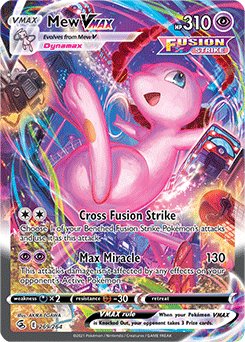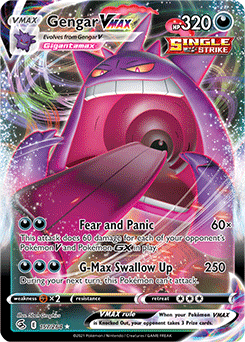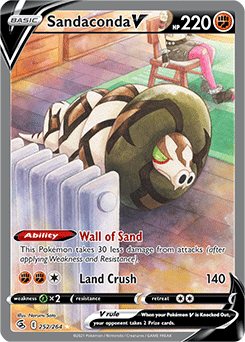Desert Storm — Sandaconda in Salt Lake City
Hello PokeBeach readers! Isaiah here, and I am happy to be bringing you another article! Last time, I covered the results of Brisbane Regionals, with a big focus on Natalie Millar’s winning deck list. The main reason I covered the event was largely because America had a regional of their own coming up in Salt Lake City, Utah. Now that the event has concluded, we saw many unexpected results, so how about we take a look at those.
Salt Lake City in Summary
In the simplest way possible, Salt Lake City Regionals was full of surprises, which is wonderful for the first American regional back. However, one of the smallest surprises was probably the general Day 2 metagame, which held many results that were far from unexpected. Thanks to data gathered by PokeStats and Complexity Card Gaming, we see that the Day 2 Metagame was as follows:

- 32 Mew VMAX
- 7 Arceus VSTAR / Inteleon
- 6 Arceus VSTAR / Inteleon / Galarian Moltres
- 5 Gengar VMAX / Houndoom
- 4 Arceus VSTAR / Malamar VMAX
- 4 Malamar
- 3 Jolteon VMAX
- 9 “Other” Arceus VSTAR Decks
- 4 “Other” Decks
As you can probably tell, the general makeup of the Salt Lake City metagame was Mew VMAX or a counter to Mew VMAX, with no other viable options, however, the way this metagame shook out was a bit more surprising, with zero Mew VMAX in the Top 8!
The Top 8 of Salt Lake City was full of surprises, so how about we take a look at the Pre-Top Cut Standings.
- Gengar VMAX / Houndoom
- Suicune V / Ludicolo
- Arceus VSTAR / Inteleon / Galarian Moltres
- Arceus VSTAR / Inteleon / Galarian Moltres
- Arceus VSTAR / Gengar VMAX
- Gengar VMAX / Houndoom
- Arceus VSTAR / Inteleon
- — (8th seed was disqualified prior to the Top 8 starting)
Now the final standings
- Arceus VSTAR / Gengar VMAX
- Suicune V / Ludicolo
- Gengar VMAX / Houndoom
- Arceus VSTAR / Inteleon / Galarian Moltres
- Arceus VSTAR / Inteleon / Galarian Moltres
- Gengar VMAX / Houndoom
- Arceus VSTAR / Inteleon
- Jolteon VMAX (bumped up from 9th due to the aforementioned disqualification)
Wow! A lot to take in!

As I mentioned before, the lack of Mew VMAX certainly stands out more than anything, as many players, myself included, expected the deck to do extremely well, including likely winning the event. Instead, the highest placing Mew VMAX on the final standings was in tenth place. Additionally, Gengar VMAX had an absolutely incredible Top 8 conversion rate, with three of eight of the final Top 8 spots, which was about half of the Gengar VMAX decks in all of Day 2, and surprisingly an unexpected Arceus VSTAR / Gengar VMAX deck was able to take down the tournament.
One of the more predictable results that we see in the Top 8, however, was the quantity of Arceus VSTAR decks in the Top 8. With Arceus VSTAR in four of eight slots, it’s pretty clear that the card has cemented itself as a potent threat in the future of this format.
Outside the Top 8, there were plenty of other interesting decks; Nick Robinson, the 2016 US National Champion, played Arceus VSTAR / Inteleon with a 1-1 Gyarados VMAX line alongside Memory Capsule to use Gyarados V‘s Get Angry for a big Knock Out after it takes a hit.
In addition, there were a few players playing a variant of Frank Percic’s Arceus VSTAR / Flygon V / Beedrill deck, including fellow PokeBeach writer Charlie Lockyer. Unlike the rest of the competition, however, Charlie brought a never-before-seen tech: Sandaconda VMAX.
Why Sandaconda?
Yeah, that’s a pretty good question, I cannot lie… but rest assured, it all makes sense.
Following the debut of Arceus VSTAR / Flygon V / Beedrill, one of the deck’s biggest concerns was dealing with many of the other Arceus VSTAR variants. On its own, Flygon V does nothing against Arceus VSTAR, they can play around Beedrill pretty easily, leaving you with Arceus VSTAR as your only real attacking option. At the beginning of the format, nobody was certain of how good Arceus VSTAR would be and many people were not playing it, sometimes out of something as simple as not owning the card. As time would go on, however, more people would acquire their copies of Arceus VSTAR and people started realizing the deck’s potential. As such, a counter was needed.
Initially, many players would gravitate toward Galarian Zapdos V as the most logical counter to Arceus VSTAR; it’s a low-Energy investment option that can pretty easily take a one-hit Knock Out, however, Galarian Zapdos V’s biggest issue is that it has a mere 200 HP, which is pretty easy for Arceus VSTAR to respond to, and not only that, but Path to the Peak was a bit of an issue to deal with to.
The next option that I saw more players set on was a 1-1 Rapid Strike Urshifu VMAX. While I personally think this tech option was not that stellar, it has some merit. Notably, Arceus VSTAR struggles to take a one-hit Knock Out on a Rapid Strike Urshifu V, needing a Choice Belt and Galarian Zigzagoon to hit 220 if they have a Double Turbo Energy. Then, if they fail to take a Knock Out on Rapid Strike Urshifu V, you can then use its attack or Rapid Strike Urshifu VMAX’s attack to take a Knock Out (or two!), establishing a significant Prize lead.
Barring the context of the Arceus VSTAR matchup, the Rapid Strike Urshifu VMAX line does not have a lot of uses. Sure, it can set up some cool plays with its G-Max Rapid Flow, but other than that, it doesn’t have a lot going for it. As such, I was consistently voicing to Charlie that I was not a fan of the inclusion of Rapid Strike Urshifu VMAX. At that point, around 11 PM Utah time the night before the event, Charlie sent me a message asking me to give him a phone call.
While chatting with Charlie and another friend of ours, Charlie Kerr, I started digging through all of the cards that I had on me at the time, considering cards like Single Strike Urshifu VMAX, Galarian Sirfetch'd V, and even Lycanroc VMAX when I stumbled on Sandaconda V.

When I read Sandaconda V, I instantly knew that it was the card to fill the role I had in mind for the Rapid Strike Urshifu VMAX slots — unlike any of the other options we had previously considered, Sandaconda V boasts pretty moderate bulk thanks to its Wall of Sand Ability plus a natural 220 HP. Thanks to this, Arceus VSTAR cannot take a one-hit Knock Out on a Sandaconda V without Path to the Peak, Galarian Zigzagoon, and a Choice Belt if they have Double Turbo Energy. Then, once they most likely fail to take the one-hit Knock Out, Sandaconda V conveniently hits exactly 280 after Weakness with its Land Crush, scoring the one-hit Knock Out on Arceus VSTAR. As a result, you will almost always be able to trade at least two for two against Arceus VSTAR decks, but if you get the first attack, you will almost definitely get a four for two trade.
As if that was not enough, I immediately remembered that Sandaconda VMAX had a pretty strong attack, so we explored adding that. After a pretty short amount of time, we came to the conclusion that it was a must — between its bigger HP, slightly stronger attack, and incredible attack effect it was a no-brainer. Thanks to the HP buff, it is entirely outside of Arceus VSTAR’s damage range and it still can easily take one-hit Knock Outs while conserving Energy. As if that wasn’t enough, Sand Pulse also offers a nice low-investment option for spread damage, which can set up some math on a variety of Pokemon, such as on Genesect V so that Arceus VSTAR can KO them without a Choice Belt.
With this new tech in mind, we made some final tweaks to the list all while accidentally coming up with the name “The Sand Man” which eventually led us to the name “Operation: Desert Storm” while considering any other sand-related jokes we could make.
With a list and name finalized, both Charlies took the deck to the tournament, and while it was a rough time for Charlie Kerr, Charlie Lockyer had a strong 7-1-1 finish on the first day an a 10-2-2 record at the end of the second day. Unfortunately, despite having 32 match points, Charlie failed to make it to the Top 8 because he barely fell shy on the Opponent’s Winning Percentage tiebreaker, finishing 9th following 8th seed being disqualified.
While the final finish stung a bit, both Charlie and I believe that the deck is extremely strong going forward, with very few explicitly negative matchups. In particular, the deck does well against Arceus VSTAR and Gengar VMAX decks which, considering Salt Lake City’s final standings, are two pretty solid matchups to be favoured in. With that in mind, how about we take a look at the deck that Charlie ended up playing.
Desert Storm
Deck List
Card Inclusions
Arceus VSTAR Line
At face, Arceus VSTAR is a super basic card, with a fairly standard Energy acceleration attack and an Ability that allows you to go find any two cards you want.
Wait, excuse me, go find any two cards!?
That is right, any two cards. Thanks to its Starbirth Ability, Arceus VSTAR essentially has a built-in safety net to ensure that you never whiff a turn-two Trinity Nova, and even better, if you naturally get the pieces for a Trinity Nova, you can save the Starbirth for a huge play later. Since I have started playing the game, I have never seen a more powerful engine than Arceus VSTAR, truly opening the doors to absolutely anything.
Oh, also, as if Arceus VSTAR itself was not enough, Arceus V has the same attack but it does zero damage while also taking one less Energy. Talk about the perfect card!
This concludes the public portion of this article.
If you'd like to continue reading, consider purchasing a PokeBeach premium membership! If you're not completely satisfied with your membership, you can request a full refund within 30 days.
Each week we post high-quality content from some of the game's top players. Our article program isn't a corporate operation, advertising front, or for-profit business. We set our prices so that we can pay the game's top players to write the best content for our subscribers. Each article topic is carefully selected, goes through multiple drafts, and is touched up by our editors. We take great pride in our program!

